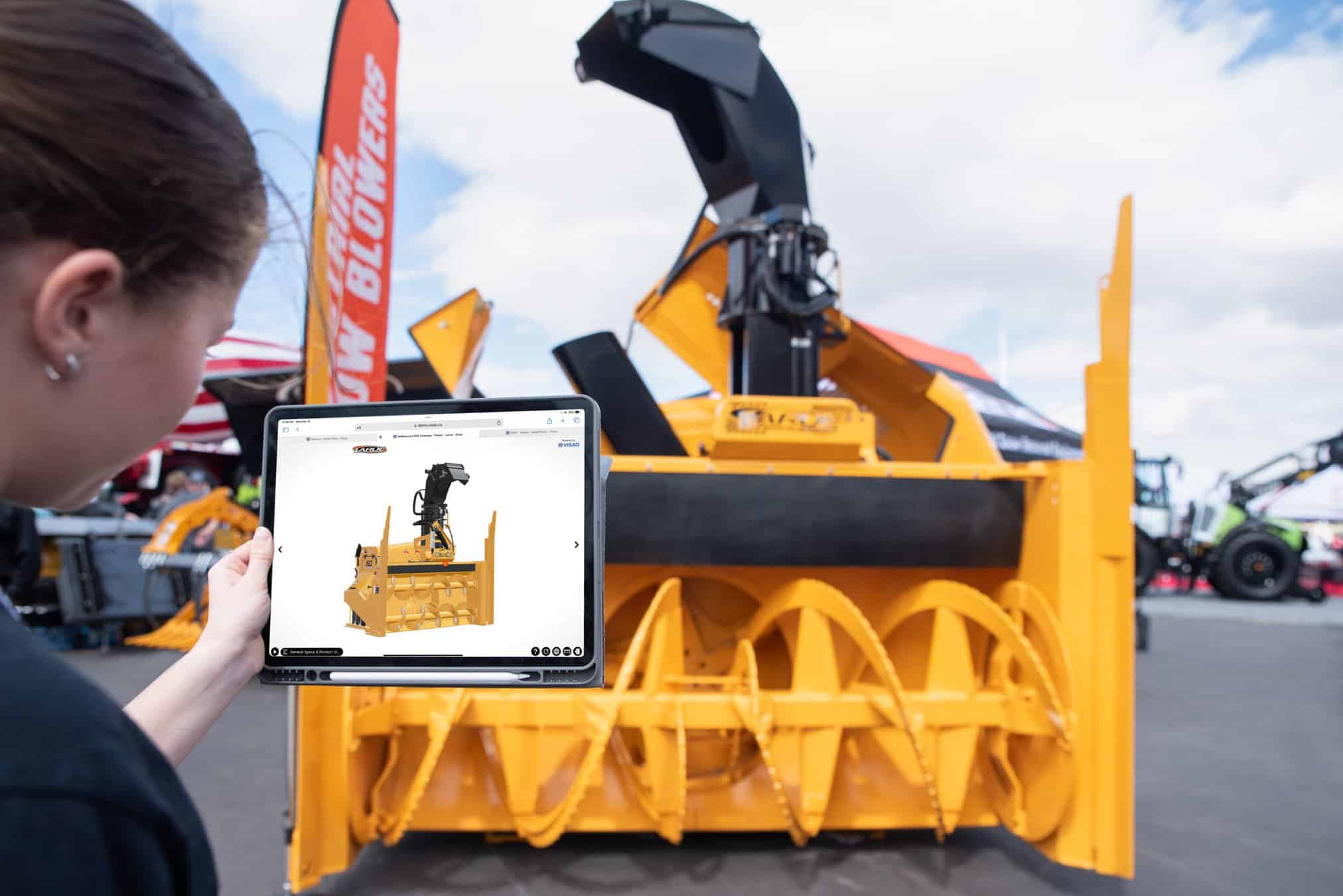Creating a 3D model of a product is essential for industries like engineering, industrial manufacturing and transportation. These digital replicas enable enhanced design visualization, efficient production workflows, optimized maintenance planning, and improved product development. If you are a beginner 3D artist, understanding the 3D modeling process is crucial for producing accurate, high-quality models that meet industry standards. In this guide, we walk you through the steps to create 3D product models while incorporating industry-standard techniques and tools.
Creating a 3D Model from Scratch: A Step-by-Step Guide
1. Plan and Gather Reference Materials
Before beginning the modeling process, you need a clear understanding of the product you want to create. Start by gathering:
- Product reference photos: These images should capture all sides and details of the object.
- Dimensions: Measure the physical object to ensure your digital model is accurate.
- Material and texture details: Take note of the product’s surface qualities, including color, finish, and texture.
2. Choose the Right 3D Modeling Software
Selecting the appropriate 3D modeling software is crucial for achieving high-quality results. Consider your project requirements and skill level when choosing a tool, as different software offers varying features tailored for specific industries and design complexities. The right software will enable you to create precise, detailed 3D models that can easily be transformed into interactive and immersive visual experiences. At Visao, we use Blender to transform technical drawings, mostly CAD files, into a 3D model that’s ready for customer-facing usage.
Discover the #1 3D Product Visualizer for your Website
3. Build the Base Structure of Your Model
Start by creating the foundational shape of your product using basic geometric shapes like cubes, spheres, or cylinders. These shapes serve as the skeleton of your 3D object and can be refined later.
Use the following tools effectively:
- Shape Tool: To design primary geometric forms and outline the general structure.
- Scale Tool: To adjust the size and proportions of the model, ensuring accuracy.
- Rotation Tool: To orient and align objects in the correct position.
Types of 3D Modeling Techniques
Understanding the types of 3D modeling is essential for choosing the right approach:
- Parametric Modeling (CAD): Focused on precise dimensions and is common in product design modeling.
- Polygonal Modeling: Uses polygons to create complex designs for animation or games.
- Photogrammetry: Converts real-world objects into 3D objects using photos.
At Visao, our customers usually come with a parametric model from their CAD software and we transform it into a polygonal model.
- Enhance the Model’s Details Using a Mesh Framework
After creating the base structure, refine the model by adding details to the mesh framework. A mesh is a collection of interconnected polygons (triangles or quads) that define the shape of the 3D object.
Key steps include:
- Curved Surfaces: Smooth out edges and add precision to curves for a more natural appearance.
- UV Mapping: Unwrap the model’s surface into a 2D layout to prepare it for textures. Focus on placing UV seams strategically to minimize distortions.
- Polycount Management: Adjust the number of polygons based on the model’s purpose. Use higher polycounts for detailed models and optimized, lower counts for faster performance.
For projects involving real-world objects, you can leverage photogrammetry tools or a 3D scanner to capture intricate details directly from physical prototypes.
5. Apply Textures and Materials
Textures and materials simulate the physical properties of the model, such as color, surface finish, and material type. This step is crucial for creating a realistic and visually appealing 3D design.
- Map Textures: Align texture files with the model’s surface using UV mapping. This ensures textures conform naturally to the object.
- Create Texture Maps: Define the appearance of materials, such as glossiness, roughness, or metallic finishes.
- Add Lighting and Shadows: Enhance the model’s depth and realism by simulating how light interacts with its surfaces.
Textures make your 3D model feel lifelike, enabling it to stand out in presentations, product displays, or interactive experiences.
6. Export and Upload
Export a CAD (computer-aided design) file in a format compatible with Visao. These formats retain precise details and are ideal for creating interactive 3D product models.
When uploaded to Visao, your CAD file is transformed into a lightweight, web-optimized 3D visualization. Visao’s platform enables you to:
- Enhance the model with annotations and interactive elements.
- Showcase the product dynamically for a 360-degree viewing experience.
- Provide your audience with immersive, real-time product engagement without the need for specialized plugins.
By combining the power of optimization with Visao’s capabilities, you can streamline your 3D modeling process, reduce time to market, and create engaging, interactive experiences that drive customer interest and sales.
7. Test and Optimize
To ensure your file is ready, it’s important to test and optimize your design for seamless integration and exceptional 3D viewing experiences. Use a 3D viewer to:
- Verify proportions and confirm that your design aligns with the intended dimensions.
- Check mesh quality for unnecessary complexity or errors that could affect performance.
- Ensure textures and materials are properly applied and aligned to maintain surface quality in the final interactive model.
Optimizing your file before uploading ensures that your product model delivers smooth functionality, faster loading times, and a high-quality user experience once online.
See 3D and AR in Action – Book a Demo
Showcasing Products with Visao: A Powerful Tool for Engagement
After creating your 3D product models, the next step is to showcase them effectively to enhance the online shopping experience or streamline business workflows. This is where Visao excels. Visao is designed to transform existing CAD files and 3D models into interactive, web-friendly visualizations. It provides a unique solution for businesses, allowing them to engage users with 3D product models directly on their ecommerce platforms.
Why Choose Visao?
- Interactive Product Visualization: Visao enables businesses to create interactive experiences for their customers. With Visao, users can:
- Rotate and zoom in on 3D objects using an intuitive viewer.
- Explore the product’s details, enhancing trust and engagement.
- Simplified Integration: Visao seamlessly integrates with ecommerce platforms and websites, reducing the time to market.
- Web-Friendly Optimization: Visao optimizes models for online use, ensuring that even complex products load quickly without compromising quality. This is essential for maintaining a smooth customer experience.
- Cost-Effective Solutions: By converting existing CAD files into web-ready formats, Visao eliminates the need for specialized 3D modeling programs or hiring external 3D artists.
- Support for Multiple Industries: From ecommerce to manufacturing, Visao serves a wide range of industries by providing 3D modeling solutions tailored to specific needs.
Experience the Power of Interactive 3D
Visao: Bringing Products to Life in 3D
At Visao, we specialize in turning traditional CAD designs into interactive, web-friendly 3D visualizations that transform how businesses showcase their products. Our platform simplifies the process, enabling you to bring your products to life with immersive features, real-time rendering, and seamless integration across devices.

